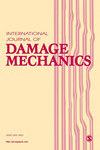使用渐近数值法的循环粘弹性连续损伤力学
IF 4
2区 工程技术
Q2 MATERIALS SCIENCE, MULTIDISCIPLINARY
引用次数: 0
摘要
为减少温室气体排放所做的努力促使能源向可再生能源过渡,但可再生能源生产的不确定性导致传统发电厂对热循环的要求更高。蒸汽轮机部件高温区域的热负荷循环导致蠕变疲劳损伤累积加剧。众所周知,这种损伤机制的最佳数值预测方法是按照连续损伤力学的形式,将损伤作为一个变量进行统一的结构建模,但这需要使用有限元分析进行大量的计算工作。本文首次提出了非迭代渐近数值方法(ANM),该方法目前仅限于使用线性硬化塑性模型进行部分循环分析,用于解决循环粘塑性问题,包括能够处理多个循环和大多数通用加载条件的损伤问题。此外,还介绍了实施加载-卸载-再加载准则所需的正则化技术和先进的构成模型等。所选择的构成模型包括非线性多背应力变量修正 Chaboche 模型(包括损伤)、修正 Chaboche-Rousselier 各向同性硬化模型(包括损伤)、粘塑性幂律、Lemaitre 损伤势能和 Kachanov-Rabotnov 蠕变损伤律。该方法通过定义的误差测量进行验证,然后应用于两个高压蒸汽轮机转子,一个在入口处有热应力消除槽(TSRG),另一个在服役类型加载条件下没有,以研究 TSRG 对蠕变-疲劳损伤演变的有利影响。将拟议 ANM 的累积误差和计算时间与传统的牛顿-拉夫逊(Newton-Raphson)解法进行了比较。本文章由计算机程序翻译,如有差异,请以英文原文为准。
Continuum damage mechanics of cyclic viscoplasticity using asymptotic numerical method
Conscious efforts on reduction of greenhouse gas emissions have led to an energy transition to renewable energy, however uncertainties of renewable energy production have resulted in higher thermal cycling demands from conventional power plants. Thermal load cycling at high temperature regions of steam turbine components leads to enhanced creep-fatigue damage accumulation. It is well established that such damage mechanism is numerically best predicted by unified constitutive modeling including damage as a variable as per the formalism of continuum damage mechanics at an expense of considerable computational efforts using finite element analysis. In this paper, the non-iterative Asymptotic Numerical Method (ANM), currently limited to partial cycle analysis with linear hardening plasticity model, is proposed for the first time to address cyclic viscoplasticity problems including damage capable of handling multiple cycles and most generalized loading conditions. Regularization techniques additionally necessary to implement loading-unloading-reloading criteria and advanced constitutive models etc. are presented. The constitutive model chosen for the formulation includes the non-linear multiple back stress variable modified Chaboche model to include damage combined with modified Chaboche-Rousselier isotropic hardening model to include damage, power law for viscoplasticity, Lemaitre’s damage potential and Kachanov-Rabotnov’s creep damage law. The method is verified with defined error measures and then applied to two high pressure steam turbine rotors, one with and another without thermal stress relief groove (TSRG) at the inlet under service type loading conditions to study the beneficial effect of the TSRG on creep-fatigue damage evolution. The accumulated errors of the proposed ANM and computational time are compared to a conventional Newton-Raphson solution.
求助全文
通过发布文献求助,成功后即可免费获取论文全文。
去求助
来源期刊

International Journal of Damage Mechanics
工程技术-材料科学:综合
CiteScore
8.70
自引率
26.20%
发文量
48
审稿时长
5.4 months
期刊介绍:
Featuring original, peer-reviewed papers by leading specialists from around the world, the International Journal of Damage Mechanics covers new developments in the science and engineering of fracture and damage mechanics.
Devoted to the prompt publication of original papers reporting the results of experimental or theoretical work on any aspect of research in the mechanics of fracture and damage assessment, the journal provides an effective mechanism to disseminate information not only within the research community but also between the reseach laboratory and industrial design department.
The journal also promotes and contributes to development of the concept of damage mechanics. This journal is a member of the Committee on Publication Ethics (COPE).
 求助内容:
求助内容: 应助结果提醒方式:
应助结果提醒方式:


